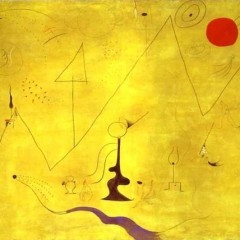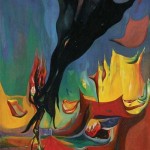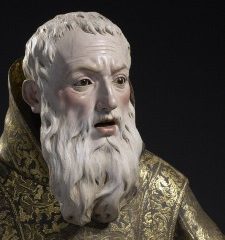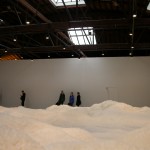Seeing the survey of Leon Kelly’s work at Francis Naumann Fine Art (April 16- June 5, 2009) I was confronted with the challenge of resurrecting the reputation of a largely-forgotten artist.
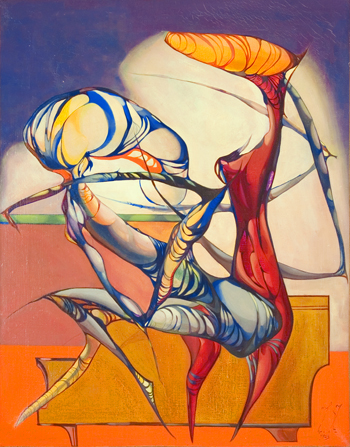
The Philadelphia-born and trained Kelly contributed to his neglect by spending the last forty years of his life in isolation on Long Beach Island, off the coast of New Jersey and populated largely by birds. But the real quandary facing those who would insert him into American art history is the stylistic diversity of his work throughout his career. Kelly’s case is not that of Philip Guston, who went from early representational painting to a coherent body of abstract work and then to a late but equally coherent group of figurative paintings in comic book style; nor is it the situation of Francis Picabia or Giorgio de Chirico whose late styles appeared to repudiate their earlier ones.
There’s no question that Kelly was accomplished and it’s not difficult to see why Julien Levy exhibited and championed his work of the 1940s and 50s, which was widely seen in the US in solo shows and important group exhibitions such as the Carnegie International, American Paintings and Sculpture at the Art Institute of Chicago and the Whitney Museum’s biennial exhibitions. While varied even during this period, it was generally characterized by intense and disturbing imaginary beings represented with a high-keyed palette. But the broader view of his career offered at Francis Naumann Fine Art revealed an artist who responded to both contemporary and earlier painting to the detriment of an identifiable artistic personality of his own.
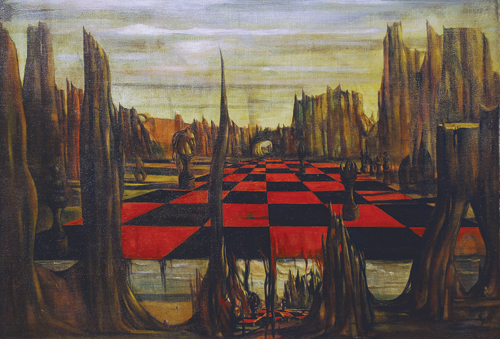
The paintings from the 1920s and early 30s were essentially student work; Kelly studied Cezanne, Cubism, De Stijl and figuration in the manner of Edward Hopper and tried out their styles; it does not help Kelly’s reputation to exhibit them. Then in the 40s and 50s Kelly produced a body of painting that, while of varied style, was consistent enough in its fantastical and Surrealist affiliation to present a coherent vision. In 1959 this fell apart; the paintings from then on included some identifiable with Kelly’s invented beings but others included representational still lives and figure paintings, some paintings in a vaguely Cubist style and a group of huge mythologies in the style of Italian mannerism, but with none of the personal adaptation that Thomas Hart Benton brought to the same mannerist sources.
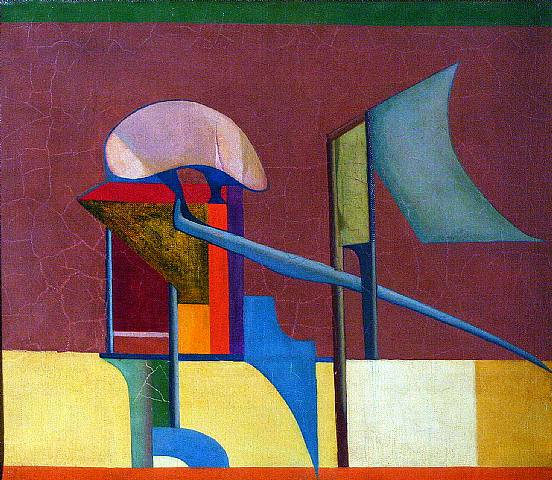
Even many of Kelly’s Surrealist paintings exhibit rather too much of his study of other artists, whether Masson, Dali or Ernst. But Kelly’s most original paintings are the group showing anthropomorphized but imaginary beings, often with insect-like heads and appendages, which in the 1950s he began to set against backgrounds that resembled geometric abstract paintings. These works are Kelly’s singular contribution to American painting, and were I to exhibit Kelly I would concentrate on them. He used a broad range of saturated colors that distinguishes his paintings from those of other Surrealists and his creatures, even when they remain close to life (with birds), convey Kelly’s intensely-personal vision.
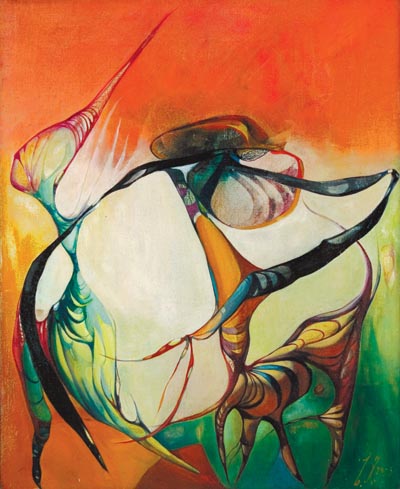
Which is not to ignore the drawings, which I think are actually Leon Kelly’s best work. The exhibition included drawings in charcoal, ink, pastel and watercolor but the largest group, in pencil, demonstrated Kelly’s extraordinary virtuosity allied with his strange and personal forms. Some were executed with such a fine touch that they resembled silverpoint, a medium Kelly taught (according to Martica Sawin in Leon Kelly; American Surrealist , ISBN 978-0-9800556-1-0, the handsomely illustrated catalog on the artist released in connection with the exhibition.)
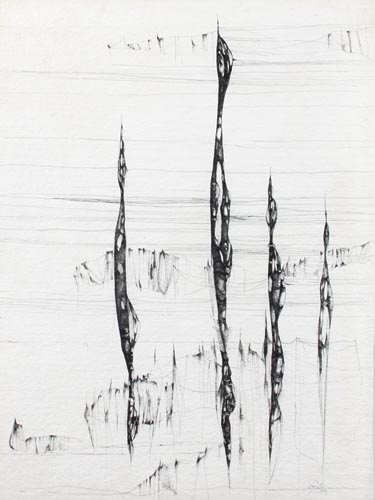
The best of Kelly’s Surrealist drawings are as fine as any produced by the expatriate European artists who showed with Julian Levy at the time. There is no question that Leon Kelly’s strongest work belongs in any museum that wants to convey a complete picture of twentieth century American art, and I suspect that younger artists who create their own imaginary beings (Mark Price comes to mind) will find him an honored forebear.


